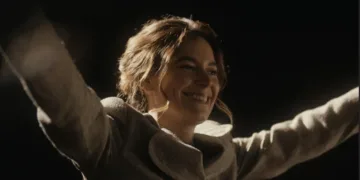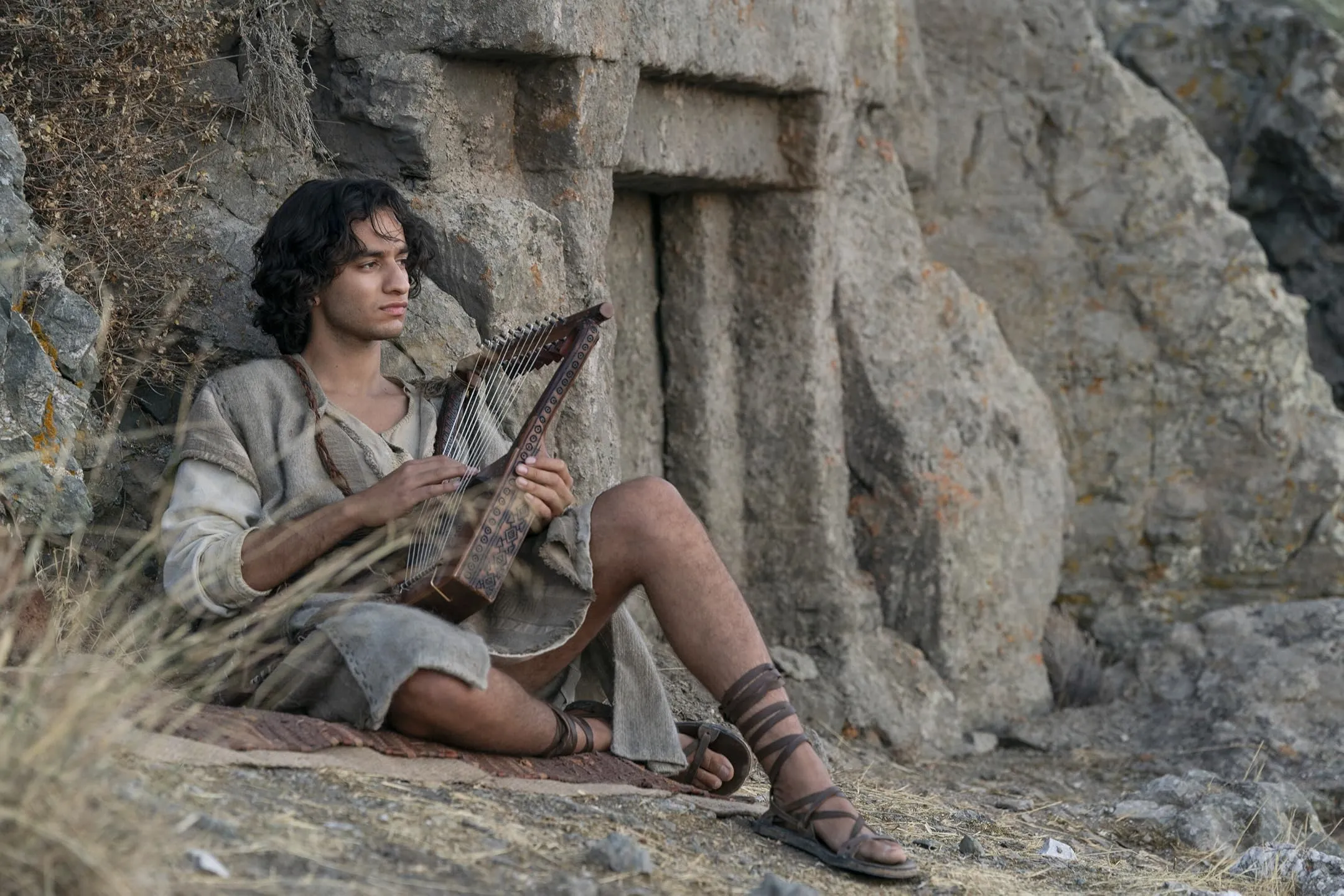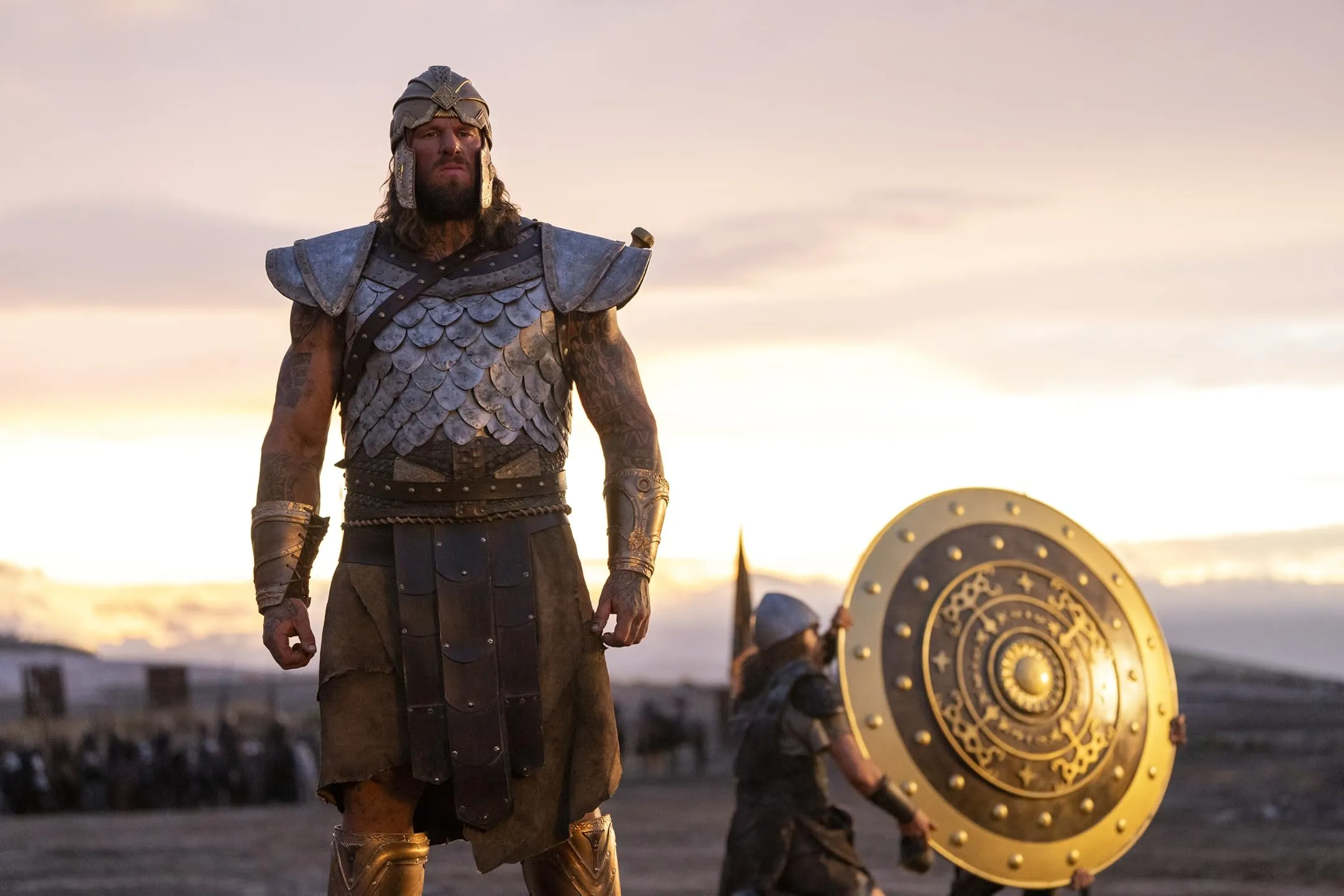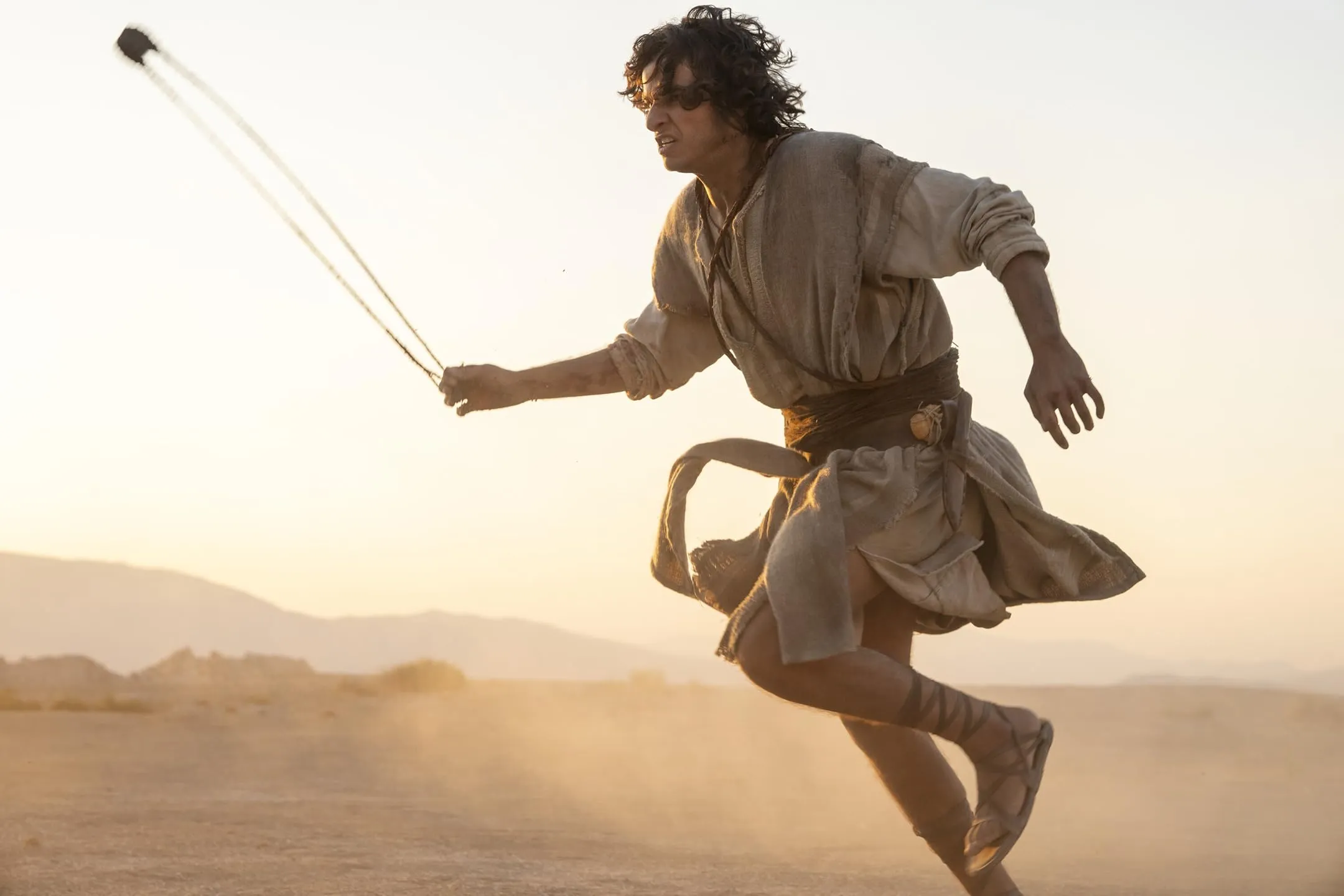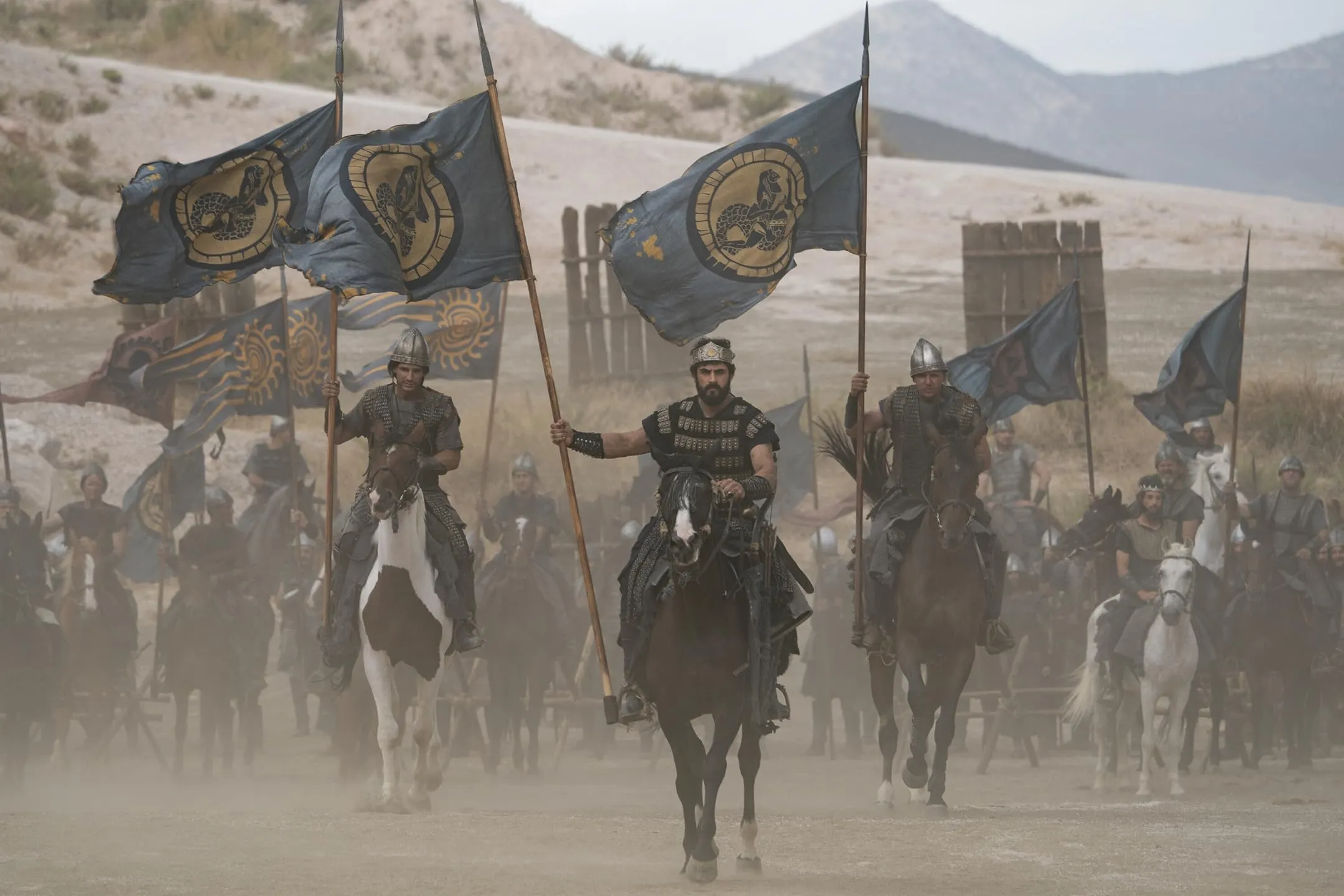House of David Season 1 presents an expansive reimagining of a well-known biblical account. The narrative follows the early life of David within the ancient Kingdom of Israel, set against the backdrop of 1000 BC.
The series charts his formative years as a shepherd and builds toward the famed encounter with Goliath, providing a rich portrayal of an era marked by deep-rooted traditions and shifting power dynamics.
The story raises questions about societal roles and the nature of leadership in a time when established norms were often challenged by emerging forces. Its depiction of familiar figures is handled with an attention to detail that opens a window into the cultural conversations of today.
Directed by Jon Erwin and Jon Gunn, the production carries forward a history of faith-based storytelling while adopting modern visual techniques that honor historical accuracy.
The creative team uses contemporary cinematic methods to present a narrative that respects its ancient origins while highlighting aspects of representation and social discourse.
Its presence on a major streaming service reflects the changing environment of television, where digital platforms play a significant role in reshaping storytelling.
The production’s choices in casting and design signal an awareness of ongoing discussions around identity and social change, offering a perspective that comments on current societal issues.
Narrative Structure and Storytelling
House of David Season 1 employs a multifaceted approach to time that begins with a vivid glimpse of the renowned confrontation between David and Goliath, setting a dramatic tone right away.
The narrative then rewinds, offering a detailed account of events that lead up to that iconic clash. This arrangement compels viewers to reassemble the story piece by piece, prompting a more active engagement with the material.
By arranging the chronology in a non-sequential order, the series invites the audience to become detectives of its own history, piecing together hints about character origins and the evolving political environment.
The series spreads its narrative across different eras within the same season, using flashbacks to reveal character backstories and the intricate dynamics among various figures in a politically volatile Israel. These temporal shifts add layers of complexity to the viewing experience, making every scene a clue that connects the past to the impending future.
At the heart of the series lies the story of a young man transitioning from the unassuming role of a shepherd into a figure destined for greatness. His early life, marked by quiet perseverance and personal struggles, unfolds alongside a depiction of intense political and familial strife.
The show presents multiple storylines that explore the internal and external challenges faced by characters as they navigate a divided kingdom.
Themes such as destiny and the interplay between divine influence and human ambition come to the forefront, casting light on the responsibilities and sacrifices inherent in leadership. The unfolding drama captures societal issues relevant to today, reflecting on how individuals confront systemic power imbalances and cultural shifts.
Casting choices and production decisions subtly underscore the significance of representation in a narrative rooted in ancient tradition.
Even moments of humor and irony hint at the industry’s occasional missteps in handling historical material, inviting viewers to recognize the contrast between lofty ideals and the practical limitations of storytelling in a streaming era.
Character Analysis and Development
House of David presents its central figure as a modest shepherd who gradually faces the weight of destiny. His journey from tending flocks to confronting overwhelming challenges offers insight into the evolution of leadership in ancient times.
David’s early portrayal emphasizes his unassuming nature and self-doubt, aspects that make his eventual rise compelling. Moments where he hesitates reveal an inner struggle between his gentle spirit and the demand for decisive action.
His portrayal prompts viewers to consider the pressure placed on individuals caught in shifting societal roles. There is a subtle commentary on how vulnerability can coexist with the courage required to steer a community through chaos.
Occasional ironic touches highlight the entertainment industry’s tendency to cast well-known figures in predictable roles, even when their personal narratives could invite more nuanced exploration.
The series presents King Saul as a ruler caught in a web of personal ambition and divine disfavor. His gradual mental unraveling and the complexity of his authority underscore a critical view of power in a time when legitimacy was constantly questioned.
The depiction of Saul challenges the notion of leadership as a straightforward path and reflects on the cost of clinging to control. Samuel, portrayed as the seer, emerges with a moral clarity that both illuminates and critiques the actions of those around him, while his presence reminds viewers of the era’s reliance on prophetic guidance.
Ahinoam, in her role as the queen, brings forward a perspective that questions traditional gender roles, contributing to a conversation about the representation of women in narratives drawn from ancient texts. Jonathan is presented with moral conflicts that enrich his character, offering a glimpse into the personal sacrifices required by duty.
Secondary figures, although not as deeply explored, contribute small yet significant details that support the overall narrative, hinting at the possibility of future developments in storytelling. Each character, in their own right, provides a subtle reflection on how the past mirrors present-day debates about authority, fairness, and the interplay between personal conviction and public responsibility.
Production Design and Visual Elements
The series presents a remarkable visual approach that emphasizes a meticulously crafted ancient environment. The location filming in settings reminiscent of the Mediterranean results in backdrops that reflect the earth-toned textures and rugged beauty of a long-gone era.
The sets capture the essence of an ancient world, with architecture and natural landscapes that invoke a sense of realism in the biblical narrative.
Detailed costumes and carefully selected props contribute to a convincing recreation of life in ancient Israel. Lighting choices and camera work emphasize the weathered textures of stone and fabric, drawing attention to the subtle interplay of light and shadow that underscores the production’s historical accuracy.
Special effects play a significant role in highlighting moments of the supernatural. Scenes that showcase figures of legendary proportions or moments of divine vision are treated with a mix of practical techniques and digital enhancements.
The portrayal of Goliath’s towering figure, for example, uses a combination of on-set effects and computer graphics to capture his colossal presence in a way that remains grounded in a tangible reality. This careful pairing ensures that the visual narrative remains accessible while still invoking a sense of mythic grandeur.
The creative team demonstrates a keen understanding of visual storytelling by aligning special effects with thematic elements.
The careful use of visual cues supports scenes where human ambition collides with forces beyond comprehension, creating layered moments that invite reflection on the nature of power and destiny.
This approach highlights the production’s awareness of current television trends on digital platforms, where detailed, visually engaging narratives drive viewer engagement. The attention to design and effects suggests a commitment to presenting an ancient world with clarity and texture, marking a shift in how historical narratives are rendered on screen.
Faith-Based Themes and Biblical Adaptation
House of David Season 1 reinterprets well-known biblical figures and events, reworking the familiar narrative of David and his encounter with Goliath into a format suited to current viewing practices.
The series employs scriptural references as structural touchpoints while introducing inventive details to enliven the ancient text. Scriptural passages appear with clear intent, yet the creative additions encourage viewers to reconsider established accounts.
This method of adaptation sparks discussions about how sacred texts may be reimagined to fit a modern visual medium without losing their historical significance.
The treatment of divine destiny, the role of prophecy, and the interplay of human choice with the supernatural are all presented with a keen sense of nuance. Characters wrestle with obligations to a higher power and their personal ambitions, reflecting the social debates that surround the influence of long-held traditions in today’s society.
The portrayal of prophetic guidance in the series is handled with subtle artistry, permitting the audience to interpret divine involvement in various ways. Rather than showcasing overt miracles, the series hints at unseen forces shaping events, a choice that aligns with the contemporary taste for ambiguity in narrative storytelling.
The series displays a conscious effort to render ancient stories in a manner that invites reflection on current social dynamics. Casting decisions, set designs, and dialogue contribute to an atmosphere that challenges viewers to rethink the power structures within a divided society.
The manner in which characters negotiate their roles amid conflicting loyalties draws a parallel with ongoing discussions about representation and authority in modern media. In this way, House of David not only reexamines a canonical tale but also influences discussions about how religious narratives are presented in an era defined by digital consumption and evolving cultural standards.
Cultural, Historical, and Mythological Context
House of David Season 1 transports viewers to an era marked by rigid social hierarchies and intricate power networks. The series paints a picture of ancient Israel where family roles, honor codes, and the influence of religious authority dictated daily life.
The depiction of palace intrigues and communal traditions shines a light on how people navigated loyalties and obligations in a society deeply shaped by ritual and custom.
Attention to political rivalries and the interplay between rulers and prophets reflects a society balancing tradition and emerging ideas. The series mirrors debates that resonate today about leadership and community values, hinting at the enduring nature of social structures and conflicts.
The narrative incorporates legendary motifs that enrich the portrayal of this ancient world. Legendary figures and supernatural phenomena appear as integral parts of the storytelling, with colossal beings and mystical visions offering more than historical record.
These elements merge well-known biblical lore with inventive interpretations, forming a narrative universe that feels both familiar and refreshingly expansive.
The inclusion of mythic components, such as the dramatic depiction of giants, provides layers that challenge strict historical interpretation.
This creative approach invites viewers to reassess how history and myth intermingle, prompting discussions about the role of legendary narratives in shaping cultural identity. Casting decisions and set designs subtly reinforce these themes, hinting at the series’ intent to bridge ancient tales with modern storytelling preferences on streaming platforms.
The Review
House of David Season 1
House of David Season 1 is a meticulously crafted epic that reinterprets an ancient tale through a contemporary lens. It balances intricate character dynamics and historical detail with subtle social commentary, inviting reflection on power, identity, and legacy. While some narrative choices may challenge viewer expectations, the series stands out for its visual precision and thought-provoking adaptation of biblical lore.
PROS
- Visually striking production design
- Creative adaptation of a classic narrative
CONS
- Pacing may challenge viewer engagement
- Some character arcs feel underdeveloped






























